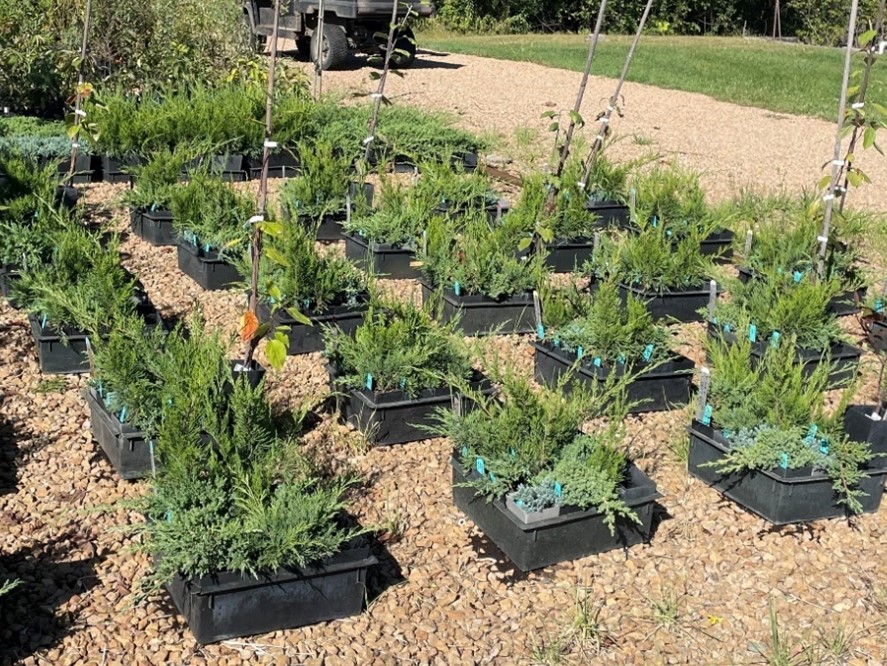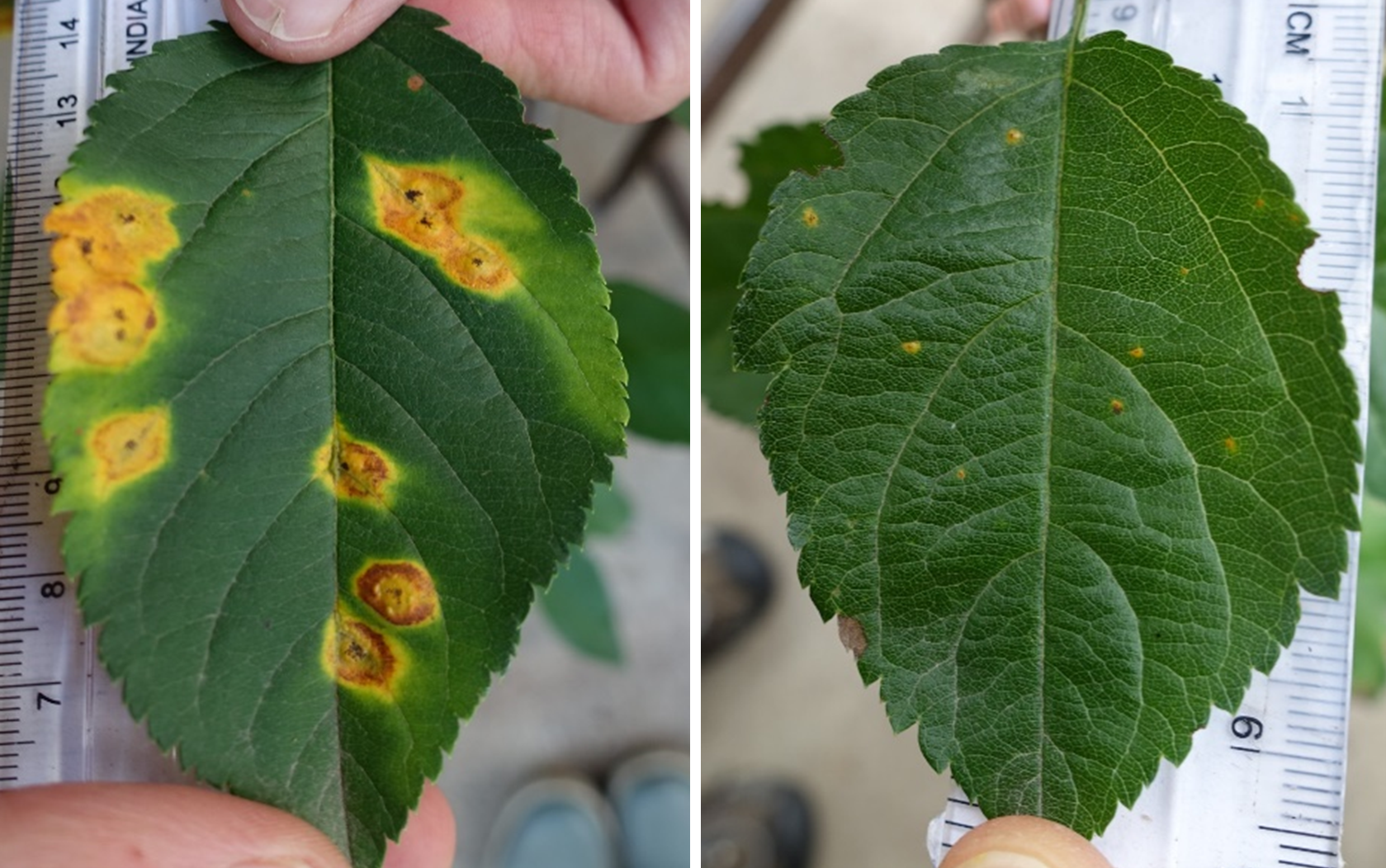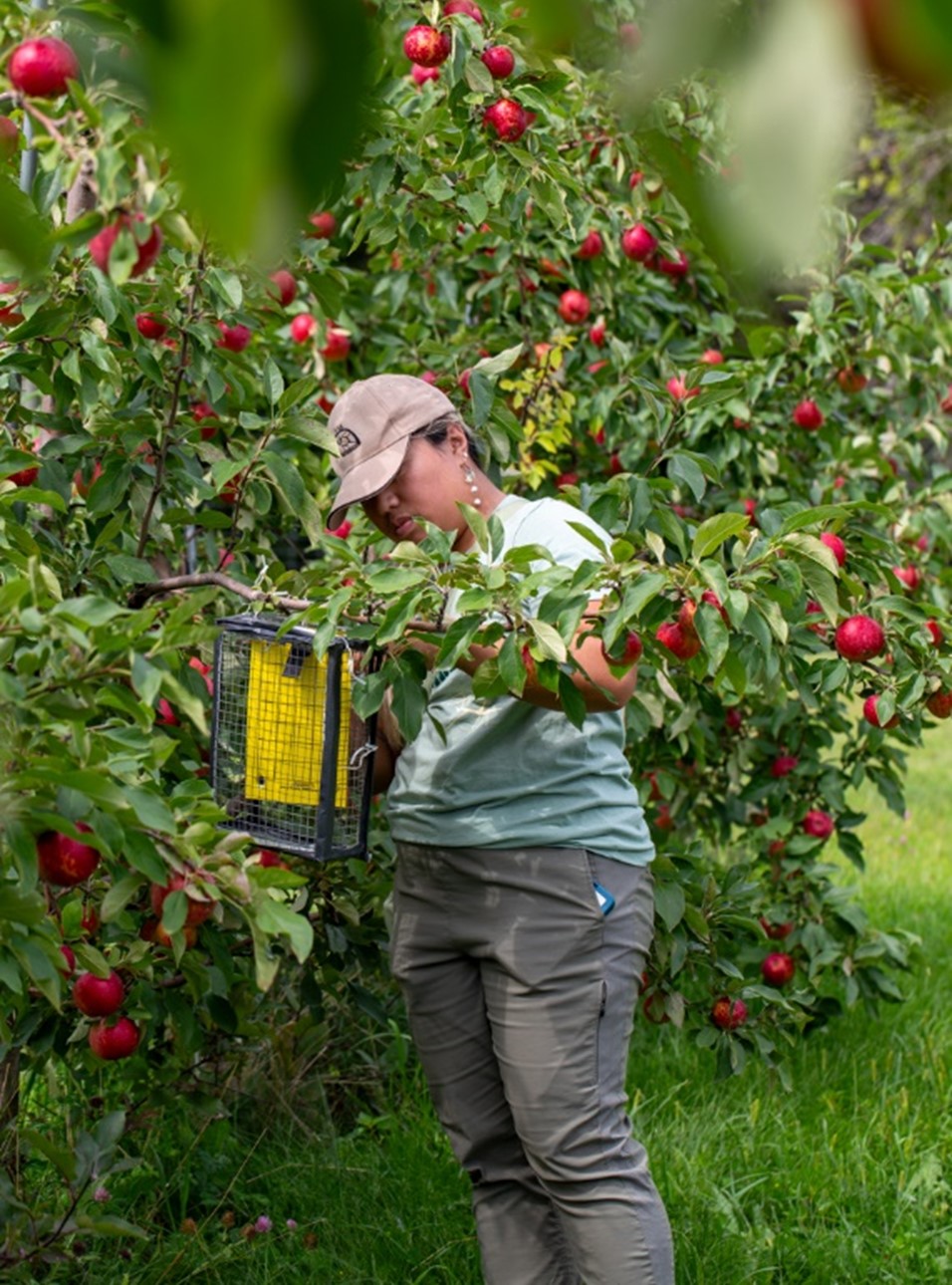The Good Manufacturing Practice (CGMP) Hazard Analysis, and Risk Based Preventative Controls for Human Food (21 CFR 117) i
Who can request information?
Data (i.e.
Examples of Research Collaboration Projects
The detection of red star rust (Gymnosporangium yamadae) in Minnesota in 2022 revealed many gaps in information about how to manage this novel disease.

In response, the MDA Plant Protection Division and the University of Minnesota (UMN) Departments of Horticulture and Plant Pathology received funding and began work on a Specialty Crop Block Grant titled Identifying Best Management Practices for Red Star Rust, Invasive Pathogen of Apple & Nursery Crops.
The goals of this project are to test commonly grown Minnesota apple and crabapple cultivars for resistance or susceptibility to red star rust, identify fungicides that can protect junipers from infection, and monitor for spores to refine spray recommendations for Minnesota’s climate.
All management information will be shared with nurseries, landscape professionals, and apple growers. Research is being conducted at the UMN Horticulture Research Station.

The detection of red star rust (Gymnosporangium yamadae) in Minnesota in 2022 revealed many gaps in information about how to manage this novel disease.

In response, the MDA Plant Protection Division and the University of Minnesota (UMN) Departments of Horticulture and Plant Pathology received funding and began work on a Specialty Crop Block Grant titled Identifying Best Management Practices for Red Star Rust, Invasive Pathogen of Apple & Nursery Crops.
The goals of this project are to test commonly grown Minnesota apple and crabapple cultivars for resistance or susceptibility to red star rust, identify fungicides that can protect junipers from infection, and monitor for spores to refine spray recommendations for Minnesota’s climate.
All management information will be shared with nurseries, landscape professionals, and apple growers. Research is being conducted at the UMN Horticulture Research Station.

The detection of red star rust (Gymnosporangium yamadae) in Minnesota in 2022 revealed many gaps in information about how to manage this novel disease.

In response, the MDA Plant Protection Division and the University of Minnesota (UMN) Departments of Horticulture and Plant Pathology received funding and began work on a Specialty Crop Block Grant titled Identifying Best Management Practices for Red Star Rust, Invasive Pathogen of Apple & Nursery Crops.
The goals of this project are to test commonly grown Minnesota apple and crabapple cultivars for resistance or susceptibility to red star rust, identify fungicides that can protect junipers from infection, and monitor for spores to refine spray recommendations for Minnesota’s climate.
All management information will be shared with nurseries, landscape professionals, and apple growers. Research is being conducted at the UMN Horticulture Research Station.

The samurai wasp, Trissolcus japonicus, is a parasitic wasp native to Asia. It is known for attacking the brown marmorated stink bug (BMSB), an invasive pest that feeds on a variety of field, vegetable, and fruit crops.
The arrival of this wasp in the United States in 2014 garnered research attention because of its potential to suppress BMSB populations, but also because T. japonicus has been documented to attack several native stink bug species.
In 2022 and 2023 surveys detected T. japonicus individuals in St. Paul, MN. This led to a Minnesota Invasive Terrestrial Plants and Pests Center (MITPPC) funded project lead by Dr. George Heimpel and Sabrina Celis with the University of Minnesota (UMN) looking at the benefits and risks of T. japonicus in the state, beginning with surveys for the wasp, BMSB, and native stink bugs in Minnesota apple orchards. The MDA is collaborating on this project through monitoring and collecting BMSB and suspect samurai wasps throughout the state.
In 2024, two T. japonicus individual were found greater than 30 miles from the initial detection site. This indicates that while populations are currently low, T. japonicus is likely present in more of the state than is currently recognized.
Low parasitism of BMSB by native parasitoids indicated that there is an opportunity for a more effective parasitoid like T. japonicus to exert stronger control on BMSB populations. Eight species of native stink bugs were also detected in our surveys. The results of these surveys and additional lab studies will be used to determine if the benefits of having this wasp attack BMSB outweigh the potential risk to native species.

The samurai wasp, Trissolcus japonicus, is a parasitic wasp native to Asia. It is known for attacking the brown marmorated stink bug (BMSB), an invasive pest that feeds on a variety of field, vegetable, and fruit crops.
The arrival of this wasp in the United States in 2014 garnered research attention because of its potential to suppress BMSB populations, but also because T. japonicus has been documented to attack several native stink bug species.
In 2022 and 2023 surveys detected T. japonicus individuals in St. Paul, MN. This led to a Minnesota Invasive Terrestrial Plants and Pests Center (MITPPC) funded project lead by Dr. George Heimpel and Sabrina Celis with the University of Minnesota (UMN) looking at the benefits and risks of T. japonicus in the state, beginning with surveys for the wasp, BMSB, and native stink bugs in Minnesota apple orchards. The MDA is collaborating on this project through monitoring and collecting BMSB and suspect samurai wasps throughout the state.
In 2024, two T. japonicus individual were found greater than 30 miles from the initial detection site. This indicates that while populations are currently low, T. japonicus is likely present in more of the state than is currently recognized.
Low parasitism of BMSB by native parasitoids indicated that there is an opportunity for a more effective parasitoid like T. japonicus to exert stronger control on BMSB populations. Eight species of native stink bugs were also detected in our surveys. The results of these surveys and additional lab studies will be used to determine if the benefits of having this wasp attack BMSB outweigh the potential risk to native species.


